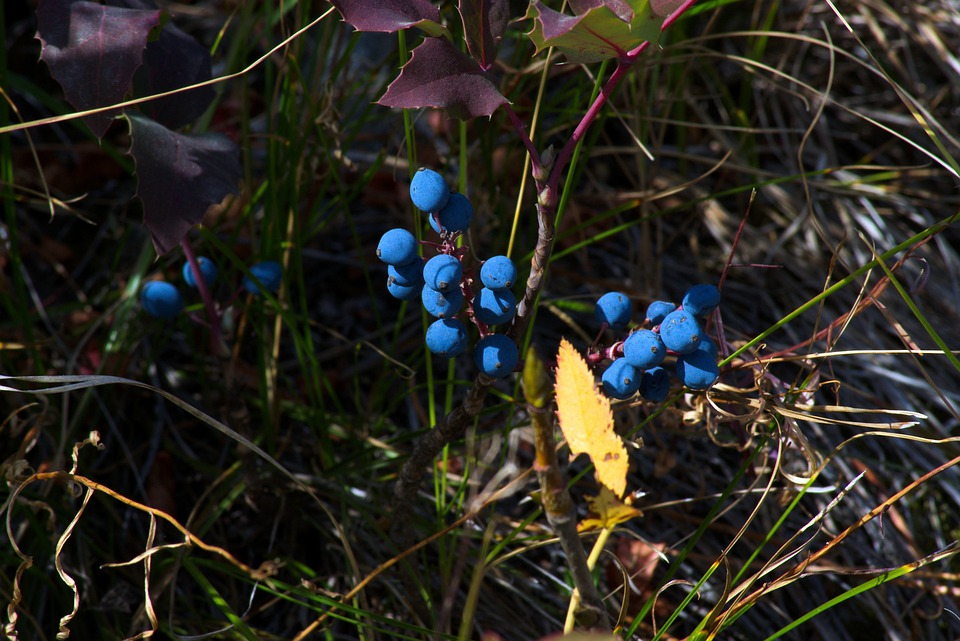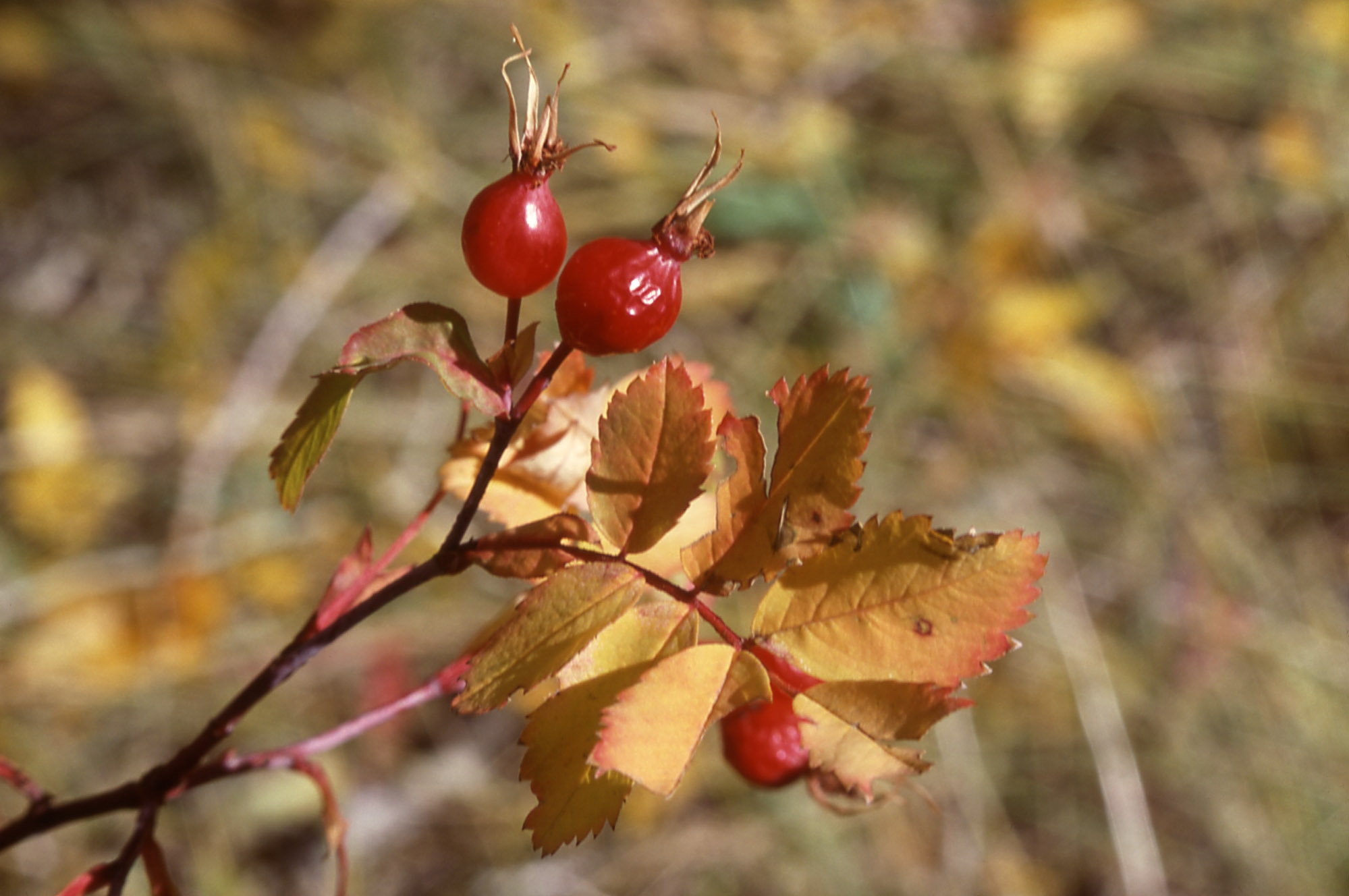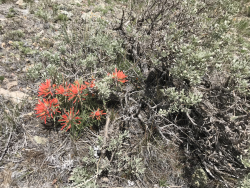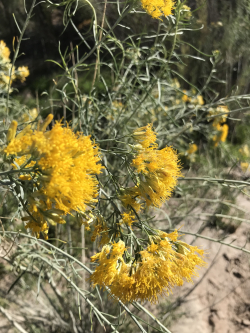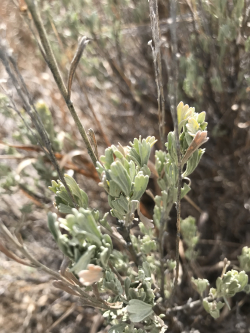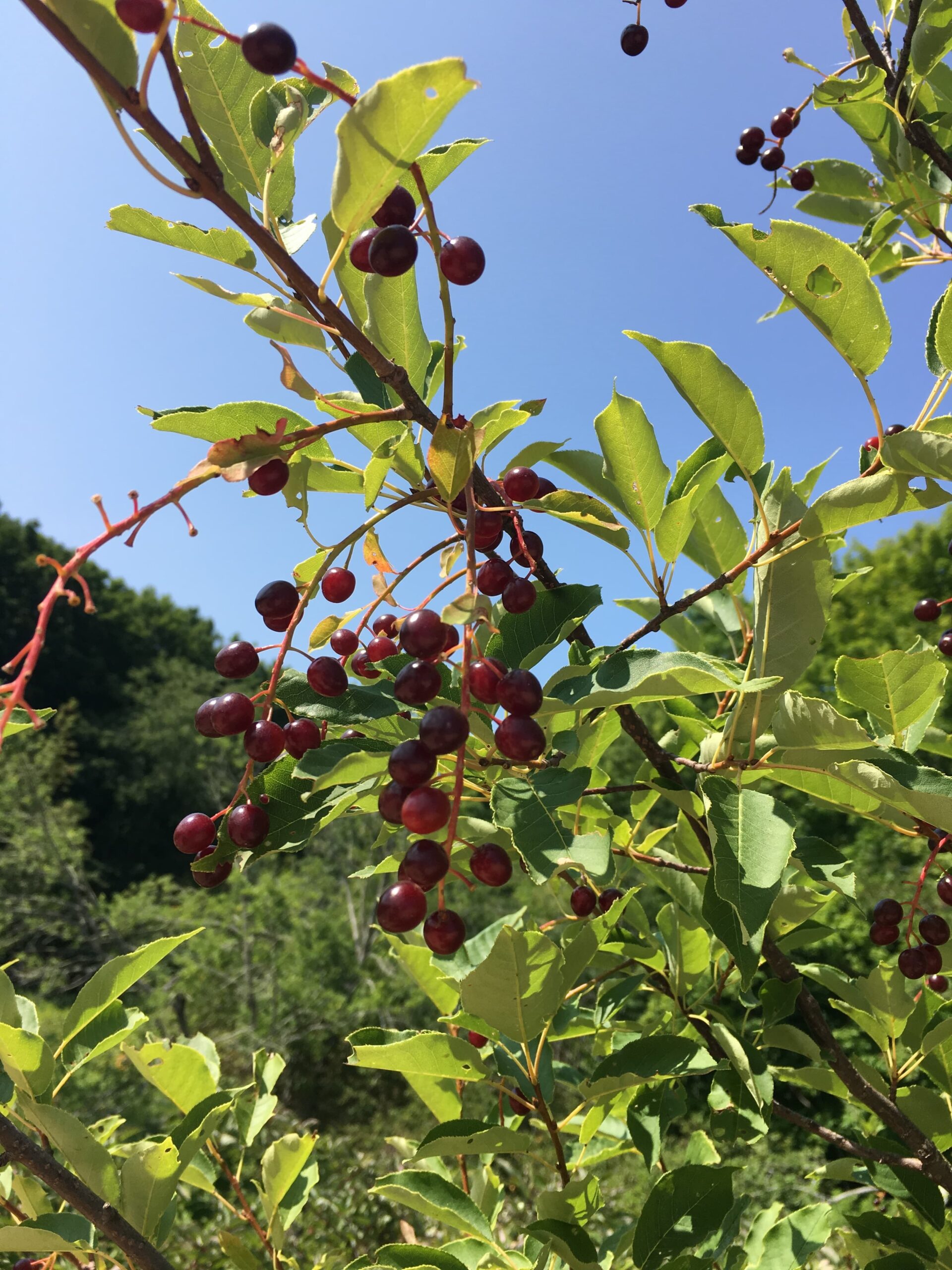
Prunus virginiana
Courtesy US National Park Service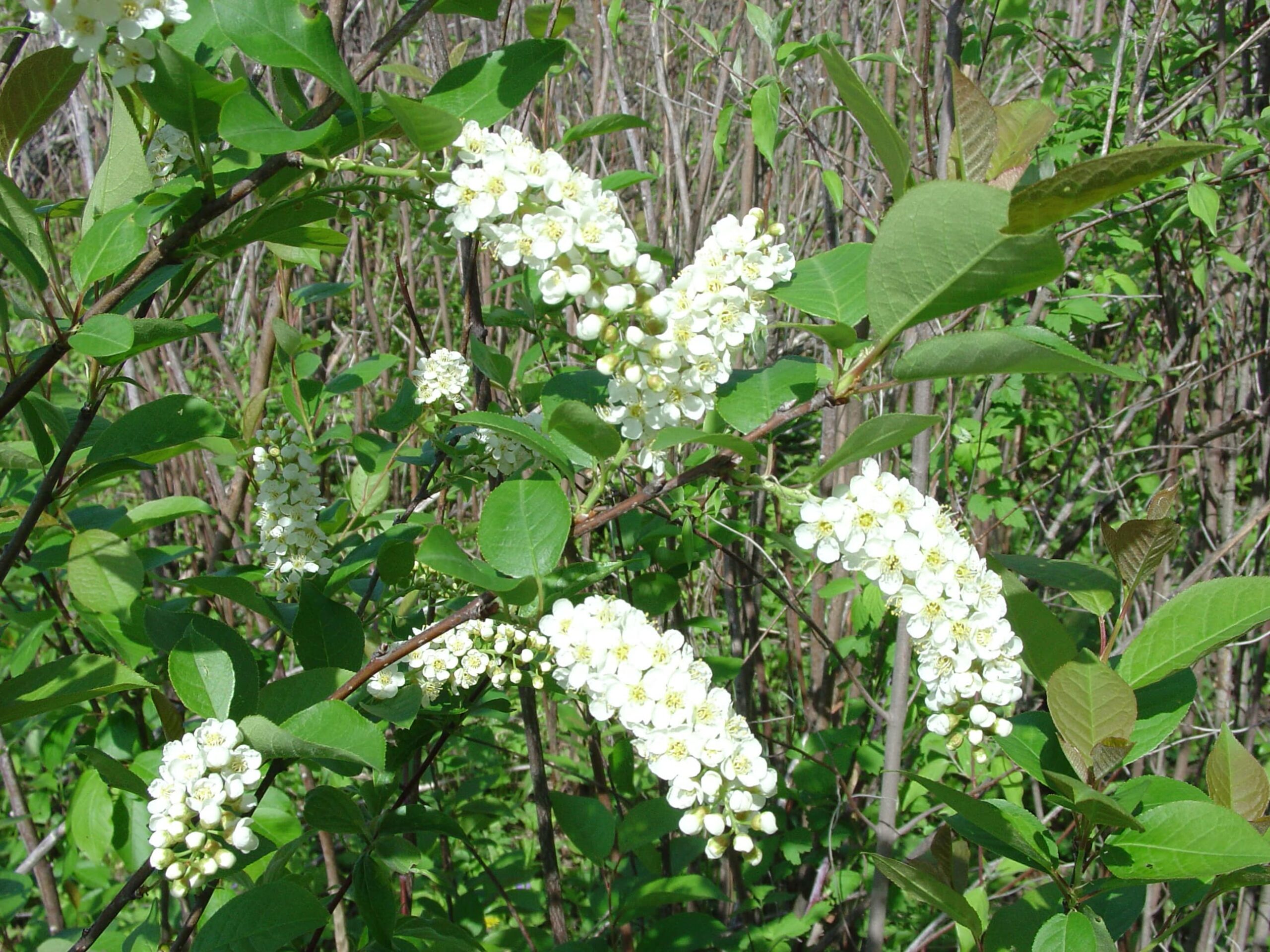
Prunus virginiana
Courtesy US Fish & Wildlife Service
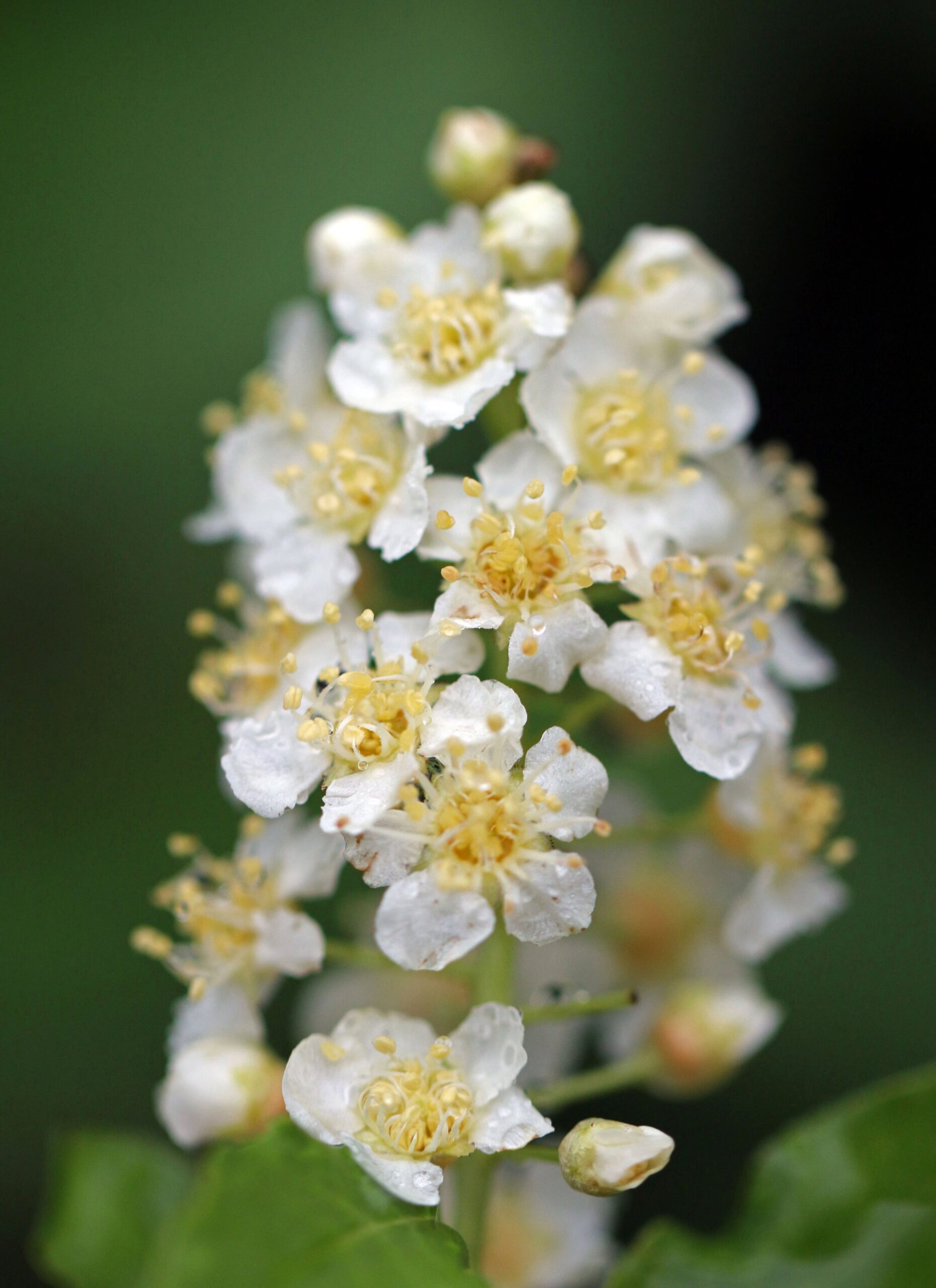 Chokecherry Flowers
Chokecherry Flowers
Prunus virginiana
Courtesy US Fish & Wildlife ServiceCertain plants were considered sacred by many native tribes. Chokecherry made the list. This versatile plant was highly prized for food, medicine, implements, and building material. And you could rightfully say it changed the history of our nation.
Legend has it that the young Shoshoni girl Sacajawea was gathering choke cherries when captured by the Hidatsa tribe and later traded to Lewis and Clark on their voyage of discovery. Without this very young mother, it is highly doubtful they would have completed their journey as she saved them from starvation, was a translator/mediator with many potentially hostile tribes and retrieved some of their precious journals from being lost to the Missouri River when their boat capsized in a rapid.
These stories ran through my mind as I gathered massive quantities of the fruit in preparation for the Stokes Nature Center “From Forest to Fork” wild foods banquet on August 24th of this month. It also channeled images of a black bear in the Tetons, gorging on choke cherries in preparation for its winter big sleep. Picking several pounds of these delectables, I decided to take a broader perspective looking for other virtues of this remarkable plant.
In addition to the above, chokecherry’s tough, springy wood was used for fabricating both bow and arrow, digging sticks, and fish spears. Native people across America routinely smashed the fruits, dried them thoroughly in the sun, and added them to rendered fat and dried meat to produce pemmican, which provided all essential nutrients in one’s diet.
Chokecherry makes a very useful natural dye. To make a dye, pulp the fruit and create a mashed mix of juice and berries. Placing fabric in this mixture will take on the beautiful pinkish red color of the dye. For lighter stains, leave the product in for shorter periods.
Due to their quick and abundant growth, chokecherries have been planted in tree rows for wind protection, for wildlife habitat and for erosion control. Today they grow in a variety of climates and regions around the country.
Nutritionally, the dark purple, red, or almost black berries are high in fiber, vitamins, and minerals. They can be used in vinegar, syrups, jams, juice, and make excellent wine. This small yet potent fruit provides an array of vitamins, minerals, and antioxidants, which contribute to its health benefits.
Chokecherry has a variety of medicinal uses. Dried berries were used to treat several bowel conditions, from diarrhea to loss of appetite, and those suffering from ulcers and other conditions. The bark is reported to be a remedy for respiratory ailments, such as a bad cough. The fruit’s high antioxidant content, particularly anthocyanins, is linked to a reduced risk of chronic diseases including cancer, heart disease, and age-related cognitive decline. Additionally, chokecherries have anti-inflammatory properties and are believed to have a positive effect on the immune system.
This is Jack Greene for Bridgerland Audubon Society, and I am Wild About Utah’s wild choke cherries!
Credits:
Picture: Courtesy US FWS and US NPS
Audio: Courtesy & © Anderson, Howe and Wakeman.
Text: Jack Greene, Bridgerland Audubon, https://bridgerlandaudubon.org/
Additional Reading: Lyle W Bingham, Webmaster, and Jack Greene, Author, Bridgerland Audubon, https://bridgerlandaudubon.org/
Additional Reading:
Jack’s Wild About Utah pieces.
Lewis and Clark on their voyage of discovery.”
Sacagawea: The Shoshone Woman Who Guided Lewis and Clark
Full History Documentary | History Revealed @History_Revealed01
https://www.youtube.com/watch?v=Xssko2bJfNM
Chokecherry Prunus virginiana, iNaturalist (Courtesy Wikipedia), https://www.inaturalist.org/taxa/54835-Prunus-virginiana
Chokecherry Prunus virginiana, Lady Bird Johnson Wildflower Center, The University of Texas at Austin, https://www.wildflower.org/plants/result.php?id_plant=PRVI

